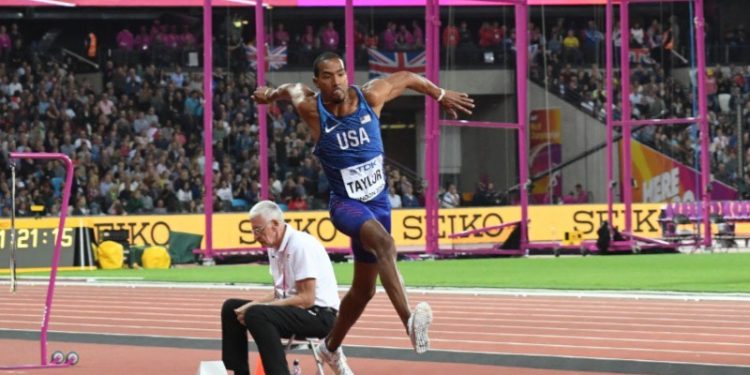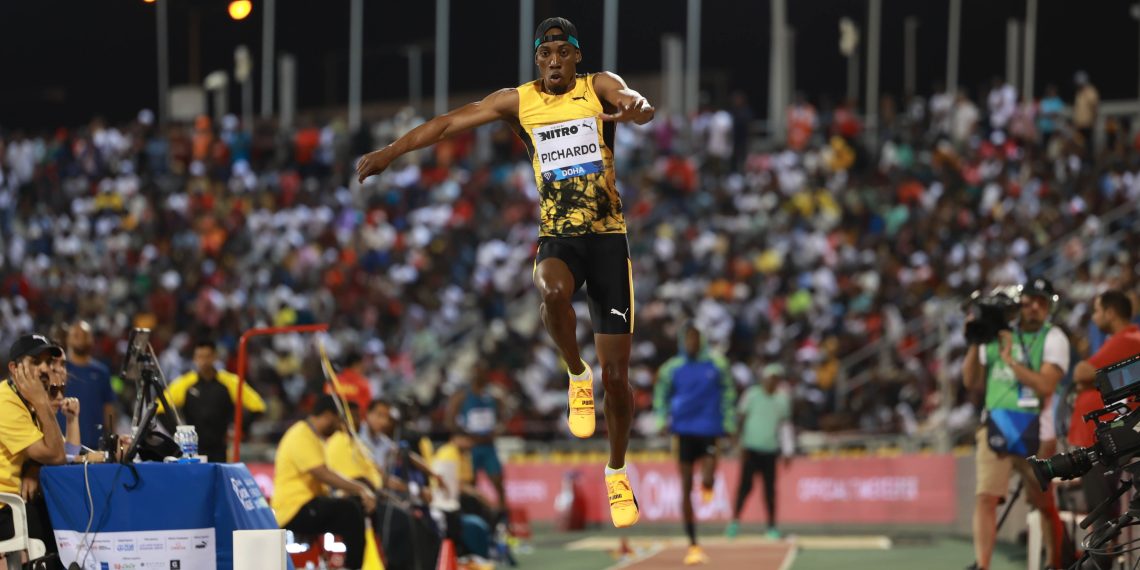The triple jump in Doha was an extraordinary event in so many ways. Pedro Pichardo is rounding into a high level of fitness with Hughes Zango and Andy Hernandez.
Stuart writes about Pedro Pichardo and 2012 and 2016 Olympic champ Christian Taylor.
A tale of two triple-jumpers
In 1995 in Gothenburg, Sweden, in the World Championship Triple Jump competition, Jonathan Edwards broke the world record not once but twice. Twenty-eight years later, that world record still stands, with no realistic chance of it being broken soon.
The Doha competition was high quality, with four athletes beyond 17.70. The result was
1 Pedro Picardo (Portugal) 17.91
2 Hugues Zango (Burkino Faso) 17.81
3 Andy Diaz Hernandez (Cuba) 17.80
Zango’s 17.81 is now logged as a World Lead in one of those statistical perversities we all love. Pedro’s Pichardo’s 17.91 was assisted by an illegal wind. As a result, it counts as the Doha winning mark but not as a world leader! Triple jumpers tell me that wind never assists them as it messes their run-up more than it assists their jump – but that is another matter.
Pichardo has been around for some years. World Cup silver medalist in 2013 and 2015 and winner of the 2021 Olympics and the 2022 European and World Championship titles. An 18m jumper
In ninth place was Christian Taylor – ninth and therefore eliminated after three jumps when the top 8 progressed. It was sad to see Christian, Olympic champion in 2012 and 2016, World Champion 4 times, only able to manage a 16.53.
He tore his Achilles tendon about three months before the Olympic trials in 2021. It was in his first outdoor meet of the year in Ostrava. He recalls: “I felt I was running and jumping on a flat tire. I thought perhaps it was jet lag or perhaps a little calf weakness but nothing I couldn’t handle. Then I felt a pop on takeoff. I knew something was incorrect, and that’s when the doctor told me the tendon was completely gone”.

He continues talking about what happened next: “It’s been a year of just figuring things back out, working with the US Olympic Committee and the US track and field on my rehab program, just figuring out how to do the coordination and strength aspect of the tendon itself. But for me, the biggest challenge and barrier have been between my ears – to be able to fully commit and believe that the tendon was going to be strong enough to hold what I was trying to put out”.
Mentally, I wondered how hard it was to deal with a jump of 16m. His honest answer was, “Not even a question. Two years ago, I was thinking about how I can go into my third Olympic Games with the hope of breaking the Olympic record, if not the world record. Then I tear the Achilles, and the mindset is, how can I make it into the pit? Talk about humility! You go from trying to be the best ever to a hurdle I started with – can I make it into the sandbox? The thing about life is that you can always be humbled by something”.
In a further article, Christian will share more of how he has coped with the last two difficult years.
Author

Since 2015, Stuart Weir has written for RunBlogRun. He attends about 20 events a year including all most global championships and Diamond Leagues. He enjoys finding the quirky and obscure story.
View all posts






















